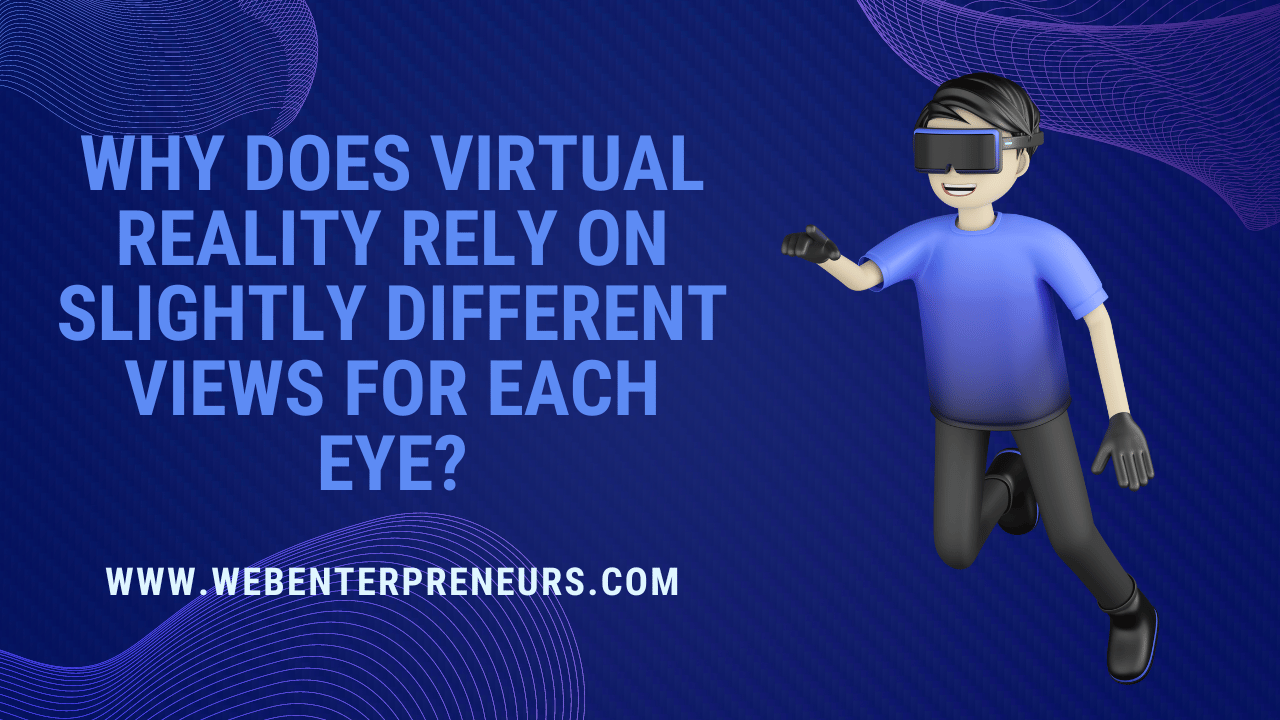Virtual Reality (VR) has been steadily transforming our world, revolutionizing everything from gaming to medical training. But have you ever paused to wonder: why does this immersive technology rely on slightly different views for each eye? Let’s delve deep into this fascinating subject “Why Does Virtual Reality Rely on Slightly Different Views for Each Eye?” to demystify the magic of virtual reality.
A Human Perspective: Stereoscopic Vision in Virtual Reality
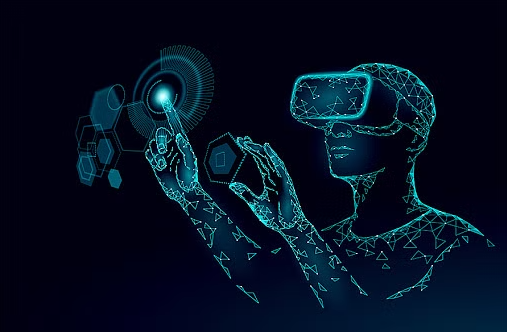
At the heart of this phenomenon is something called ‘stereoscopic vision.’ This term refers to our human ability to perceive depth and distance, thanks to the slightly different images we see with each eye.
When you gaze at an object, your left and right eyes capture slightly different angles of the same scene. These variations, known as binocular disparity, are processed by your brain, which merges these images into one. The result? You perceive depth, a three-dimensional (3D) view of the world around you. VR capitalizes on this concept by presenting each eye with a slightly different image, creating the illusion of a 3D virtual environment.
The Art of Illusion: 3D Depth Perception in Virtual Reality
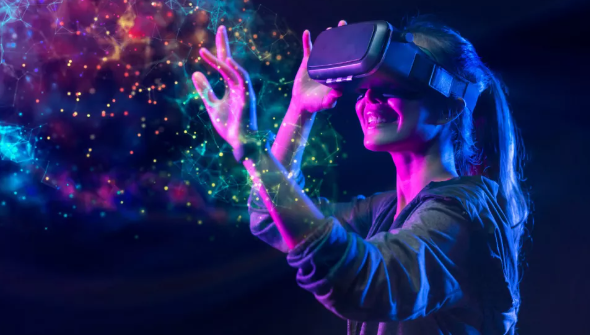
To generate this 3D effect, VR employs a technique akin to traditional 3D movies. VR headsets contain two small screens, one for each eye. Each screen displays a similar image, but from a slightly different perspective. This difference mirrors the natural disparity between your eyes’ views.
When you put on a VR headset, your brain merges the slightly different images from each eye, just like it does in the real world. This results in a perception of depth and distance in the virtual landscape, making it feel incredibly realistic.
Playing with Perception: Visual Cues for Depth Perception in VR
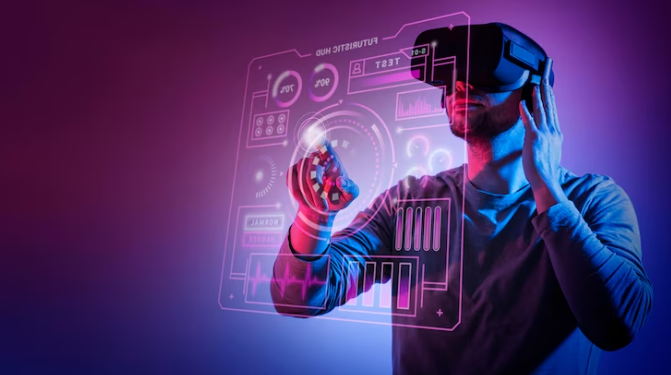
Apart from binocular disparity, VR also manipulates other visual cues to simulate depth perception. These cues include parallax, shading, perspective, and relative size. All these tricks of the trade contribute to making the VR experience incredibly immersive, tricking your brain into believing the virtual world is real.
Perfecting the Craft: Parallax Effect in Virtual Reality
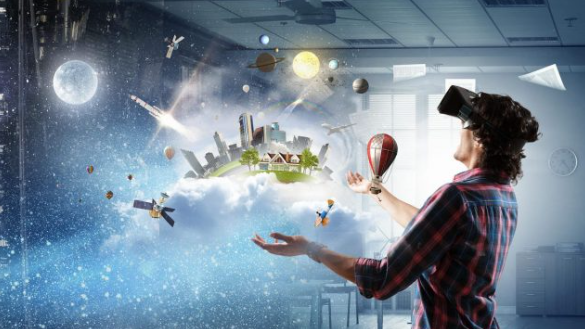
The parallax effect is one such powerful visual cue. This effect involves the apparent motion of objects when you view them from different positions. In VR, the parallax effect allows objects to move at different speeds based on their distance from you, enhancing the perception of depth and realism.
Making it Tangible: Haptic Feedback in VR Simulations
Virtual Reality goes a step beyond visuals by incorporating haptic feedback. This technology replicates the sense of touch in the virtual world, adding another layer of immersion. With haptic feedback, you can feel the vibration of a virtual car engine or the impact of a virtual ball – all contributing to an astonishingly authentic virtual experience.
Looking Into the Future: Eye-tracking Technology in Virtual Reality
One of the most promising advancements in VR is eye-tracking technology. Eye-tracking can track the position and movement of your eyes within the VR headset, adjusting the images accordingly. This results in a more personalized and realistic VR experience, heightening immersion to a level previously unimagined.
Unleashing the Power of Depth Mapping in Virtual Reality
Depth mapping is a crucial cog in the VR wheel. It’s the process of mapping a 3D space onto a 2D image, a technique that allows VR systems to understand and depict depth and distance. Depth mapping uses the principles of binocular vision and parallax to generate a field of view with discernible depth.
Sophisticated sensors and cameras in VR systems perform depth mapping by capturing spatial data and converting it into a depth map. This map enables the VR system to understand the 3D structure of the virtual environment, contributing significantly to creating a realistic and immersive user experience.
Tailoring Visual Experiences: Head-mounted displays (HMDs) and Eye Differences in VR
Head-mounted displays (HMDs), the most common type of VR device, have been designed meticulously to accommodate the subtle disparities in our visual perception. HMDs like Oculus Rift, HTC Vive, and PlayStation VR all use a dedicated display for each eye, creating the slightly different perspectives needed to deliver an immersive 3D experience.
Moreover, most modern HMDs allow users to adjust the interpupillary distance (the distance between the centers of the pupils of the eyes) to match their unique eye structure. This personalization offers a comfortable and realistic VR experience, further enhancing user engagement and satisfaction.
A Dive into the Science: Understanding the Role of Optics in VR
Optics play a crucial role in providing different views for each eye in a VR headset. High-quality lenses are used to focus and reshape the image for each eye, creating the perception of a wide field of view. The optics work in harmony with the separate displays to create a consistent and immersive 3D environment. The successful manipulation of optics in VR technology is a testament to the precision and sophistication of VR hardware design.
Pushing Boundaries: Individual Eye Differences and VR Realism
Interestingly, VR developers also take into account the slight differences that exist between the visual acuity of individual users’ eyes. For instance, one might have a dominant eye or varying degrees of myopia or hypermetropia in each eye. To cater to these differences, future VR systems might include eye-tracking and adaptive optics to adjust images for each eye independently. This approach can further enhance the realism and comfort of the VR experience, showcasing the enormous potential that VR holds for the future.
Is it all Just Visual? The Role of Sound in VR
While visual cues are paramount in creating immersive VR experiences, the role of sound can’t be underestimated. Spatial audio in VR uses binaural beats and sounds that change with head movements, adding another layer of immersion. Just like the slightly different images seen by each eye, the slightly different sounds heard by each ear contribute to creating a convincing 3D soundscape that complements the visual experience.
FAQs About Why Does Virtual Reality Rely on Slightly Different Views for Each Eye?
How does virtual reality create a 3D effect?
Virtual Reality creates a 3D effect by displaying slightly different images to each eye, simulating the binocular disparity we experience in real life. This tricks the brain into perceiving depth and creates a three-dimensional view of the virtual world.
What is the role of binocular vision in virtual reality?
Binocular vision is crucial in virtual reality as it contributes to our perception of depth. By displaying slightly different images to each eye, VR mimics the natural binocular disparity, making the virtual environment appear three-dimensional.
Why do virtual reality headsets have separate displays for each eye?
Virtual reality headsets have separate displays for each eye to replicate the way we perceive the world. Each eye views a slightly different image, and these differences are processed by the brain to perceive depth and distance.
Can virtual reality trick the brain into perceiving depth?
Absolutely! By manipulating visual cues such as binocular disparity, parallax, shading, perspective, and relative size, virtual reality can indeed trick our brains into perceiving depth in the virtual world.
What technologies enable different views for each eye in virtual reality?
Virtual reality uses several technologies to create different views for each eye, including dedicated displays for each eye in the headset, high-quality lenses for focusing and reshaping images, and sophisticated software for depth mapping. Future technologies might also include eye-tracking and adaptive optics to adjust the images for each eye independently, catering to individual differences in visual acuity.
Does virtual reality rely on individual eye differences for a more realistic experience?
Yes, VR does take into account the individual differences in users’ eyes. This is why VR headsets have adjustable interpupillary distances. Future VR technology could also adjust the visuals based on each eye’s visual acuity, further enhancing the realism and comfort of the VR experience.
Also Read: Garage Door Styles with Windows (Detailed Guide)
Final Words
The world of Virtual Reality is an intriguing blend of technology and human perception. By mimicking the way our eyes naturally work, VR can transport us to alternate realities that feel astonishingly real. So, next time you put on a VR headset, remember the incredible interplay of vision and tech that makes this experience possible – and enjoy the ride!
Virtual reality indeed thrives on our eyes’ differences, but this is just one piece of the marvel that is VR. As advancements in haptic feedback, eye-tracking technology, and more continue to progress, the line between the virtual and the real world continues to blur. One thing is clear – Virtual Reality holds an incredibly immersive and promising future. And we’re just getting started. As we draw to a close, we sincerely hope that this article has served as a valuable reference, assisting you in unraveling the complexities and nuances surrounding the topic of “Why Does Virtual Reality Rely on Slightly Different Views for Each Eye?”

